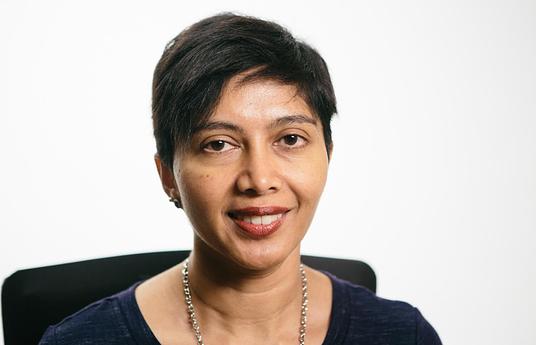Anna-Mari Jaatinen
Anna-Mari Jaatinen is the principal of Siltamäki Elementary School. Jaatinen's approach includes creativity, innovativeness, community, art and technology.
Jaatinen's developed the Creative Fire Model (2011) which highlights all of the structural elements of a school that need to be taken into account.
Skills
How should learning be encouaged in schools?
Learning should be a social process in which all students are able to learn naturally and be active participants. Utilizing diversity and different age groups is very important for this.
Teachers
What are your hopes for teachers?
I hope that teachers are interested in society and its expectations, in the surrounding world as well as in the education system. I look forward to children being genuinely activated through learning and having the chance to influence the system, so that it becomes child-centered.
I also look forward to the development of evaluation in schools - it is important to keep assessment humane, so that it isn't just an exam at the end of a course.
Assessment
How should pupil evaluation and assessment change?
Traditional evaluation is based on exams. School culture is progressing towards project based and collaborative learning that consists of a beginning, a process and an end.
The role of self assessment and group assessment should be developed. It is necessary to remember to evaluate holistically.
Environments
What do you think is an exciting learning environment?
Learning environments have developed quite a bit. What children need are informal approaches - traditional rows of desks in structured classrooms with no regard to color or lighting are outdated. Natural light, scenery, color, acoustics and how the classroom can be modified should be taken into account.
At Siltamäki we have a thing we call the 'stress-free area' where acoustics, and what effect they have on learning, as well as atmosphere are key factors.
Leadership
What should change in education policy?
Education policy should change in a way that leaves room for development work. It should be flexible so that we have time to reflect without pressure.
Throughout the years a lot of money and time has been put into different superficial training programs that have little to do with the daily life of a teacher. Thus, the effects of the training program wear thin.
What would you like to say to school policymakers?
Finland is currently on the right path. I am extremely happy about the new curriculum. It is similar to the previous one, but with a stronger vision about where we are heading. We need to remember to keep investing in teacher training.
Personal memory
What is your favorite memory from your own formal education?
In high school I had an amazing history teacher who would teach in both narrative and traditional ways, which got me fired up. There are many traditional ways to enrich teaching and to inspire.
The next 100 years
The next 100 years of Finnish education should... be humane, project based and focused on preparing students for the future. It should succeed and build confidence through institutions that break the boundries of traditional controlling societies.


